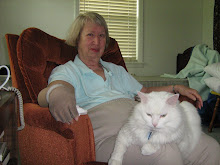When I travel, I want to find out as much as I can about the country I’m visiting. I look for places associated with historical events or famous persons. I keep my eyes open and talk to people. I learn a lot about places that I never knew from reading books and newspapers – or from listening to guides whose primary purpose is to amuse the travelers.
People travel for various reasons. For some it is an excuse to get away from the routine of daily living, to “see something different.” When I grew too old to handle luggage or to search on my own for hotels and restaurants in strange cities, I took organized tours. Tour guides herded us around major “sights”, always beautiful, but usually places I had seen before. I was appalled by women who only wanted to shop, as if they couldn’t buy the same things for less money at the mall at home. I tried to find time to slip away from the group and do a little exploring by myself.
After the philatelic exhibition closed, the stamp collectors scattered. Most flew back to the U.S. Wally and I took a week to see more of Denmark on our own. Before the trip I’d arranged for a rental car and made reservations for places to stay, beginning with a few nights in a bed and breakfast in Copenhagen. That turned out to be a big surprise.
During the week Wally was at the stamp show, I wandered about the center of the city. I formed a mental picture of Copenhagen as a quaint old city of sidewalk cafes and narrow little streets lined with old buildings housing charming little shops. Yes, it is all there, along with Tivoli Gardens, a delight for tourists.
Wally and I got into that little Honda and drove out beyond the boulevard which marked where the old city walls had been torn down. We were in a modern city with strip malls and houses where ordinary, working class Danes live. We found our bed and breakfast in a neighborhood of little red brick bungalows. They looked amazingly like house Wally built in Arlington Heights, Illinois.
In most of the U.S. “brick” houses are wood-frames covered with plywood with only a veneer of bricks. After the great Chicago fire in the 1870's, the city passed strict building codes, requiring. all houses have solid, fire-proof walls of brick backed up with concrete block. No wooden frames in Chicago.
Also, Chicago has narrow building lots; in most cases only 25 feet wide. The typical red brick Chicago bungalow is long and narrow with the narrow end in front. A large picture window is off-center to make room for a front door. In newer neighborhoods you see block after block of almost identical houses. Copenhagen’s newer neighborhoods looked exactly the same.
We flew from Chicago to Denmark and found our bed and breakfast in a neighborhood which looked as if we had never left Chicago.
Monday, April 25, 2011
Subscribe to:
Post Comments (Atom)




No comments:
Post a Comment